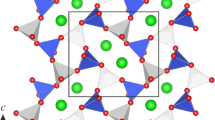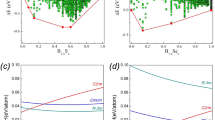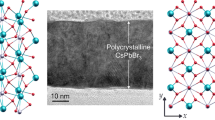Abstract
THE changes in a single crystal of potassium dihydrogen phosphate passing through its transition point have been described in a recent letter by Ubbelohde and Woodward1. Changes of a rather similar character occur in barium-strontium titanate, as I have been able to observe. The material examined (a solid solution of BaTiO3 and SrTiO3 in a molar ratio of about 7:1) has, at room temperature, a tetragonal perovskite-type structure like barium titanate2 with an axial ratio c/a=1.0072, and changes at about 80° C. to an ideal cubic perovskite type. The change from cubic to tetragonal involves a simple uniform extension of the unit cell along one cube axis, which becomes the c-axis. There are three ways of selecting this axis for a given cubic crystal, and therefore three aspects (with c-axes mutually at right-angles) in which a tetragonal structure may be derived from the cubic with very little actual rearrangement of the atoms.
This is a preview of subscription content, access via your institution
Access options
Subscribe to this journal
Receive 51 print issues and online access
$199.00 per year
only $3.90 per issue
Buy this article
- Purchase on Springer Link
- Instant access to full article PDF
Prices may be subject to local taxes which are calculated during checkout
Similar content being viewed by others
References
Ubbelohde, A. R., and Woodward, I., Nature, 156, 20 (1945).
Megaw, H. D., Nature, 155, 484 (1945).
Author information
Authors and Affiliations
Rights and permissions
About this article
Cite this article
MEGAW, H. Changes in Polycrystalline Barium-Strontium Titanate at its Transition Temperature. Nature 157, 20–21 (1946). https://doi.org/10.1038/157020a0
Issue Date:
DOI: https://doi.org/10.1038/157020a0
Comments
By submitting a comment you agree to abide by our Terms and Community Guidelines. If you find something abusive or that does not comply with our terms or guidelines please flag it as inappropriate.



